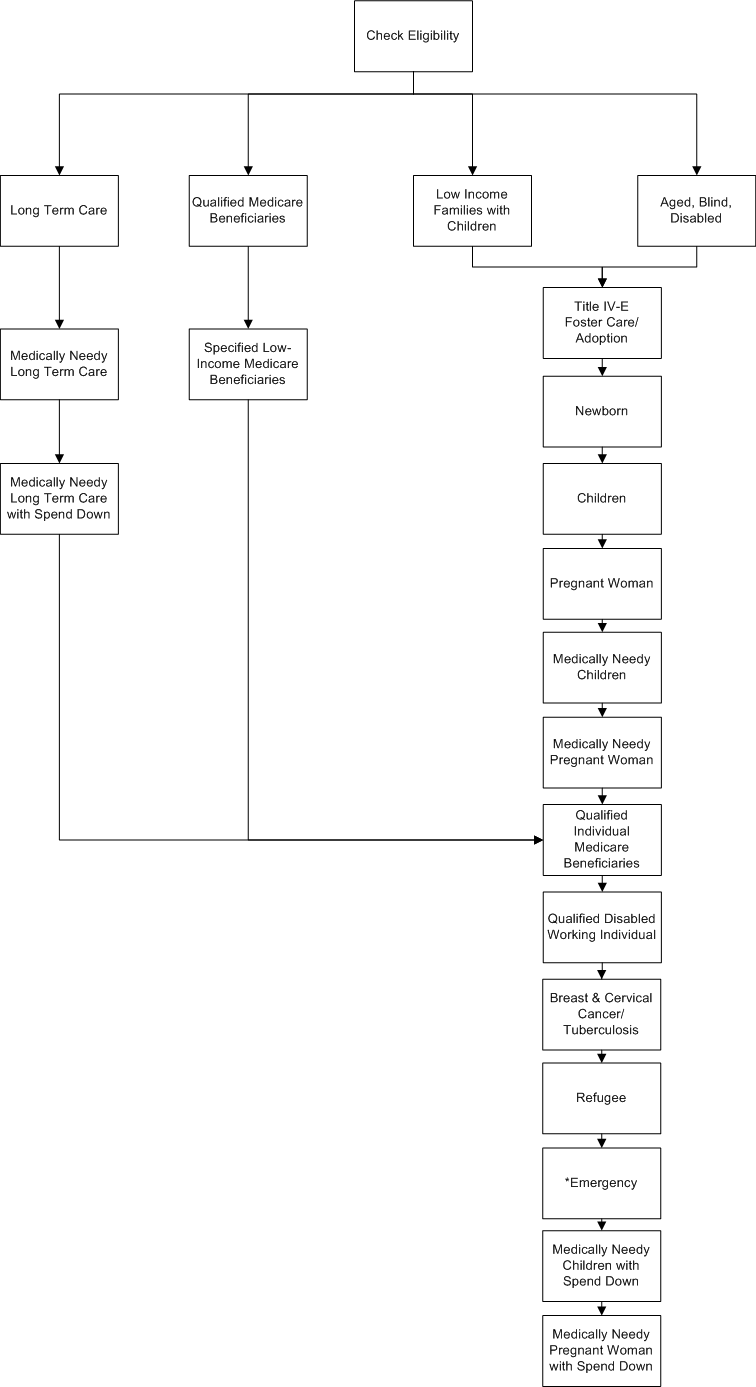The term cascading eligibility refers to a process whereby coverage type eligibility is determined based on a hierarchy. The eligibility rule set executes the rules for the coverage type with the highest priority first, followed by the rules for the coverage type of next highest priority.
If a client applies for Medical Assistance, the system checks if they are eligible for a number of coverage types within the program. If they are eligible for a coverage at the top of the cascade, the lower coverage types are not checked. If the client fails a higher coverage type the system checks the next coverage type below, and keeps checking until the rules find a coverage type the client passes. The client may fail all coverage types.
The following figure defines the cascade within Cúram Medical Assistance.

* Emergency
Emergency contains the coverage types listed below, and they are determined in the following order within the cascade:
- Emergency ABD/Emergency LIFC
- Emergency Title IV-E Foster Care/Adoption
- Emergency Newborn
- Emergency Children
- Emergency Pregnant Woman
- Emergency Medically Needy Children
- Emergency Medically Needy Pregnant Woman
- Emergency Medically Needy Children with Spend Down
- Emergency Medically Needy Pregnant Woman with Spend Down
Note: Eligibility for CHIP is triggered separate to Medical Assistance, and is therefore not included in the cascade. Eligibility for CHIP requires that individuals are not eligible for Medical Assistance, the rules execution ensures and the program rules for CHIP ensure this.